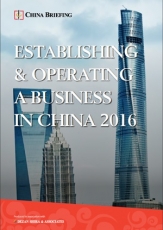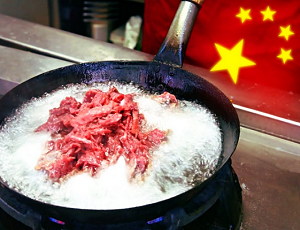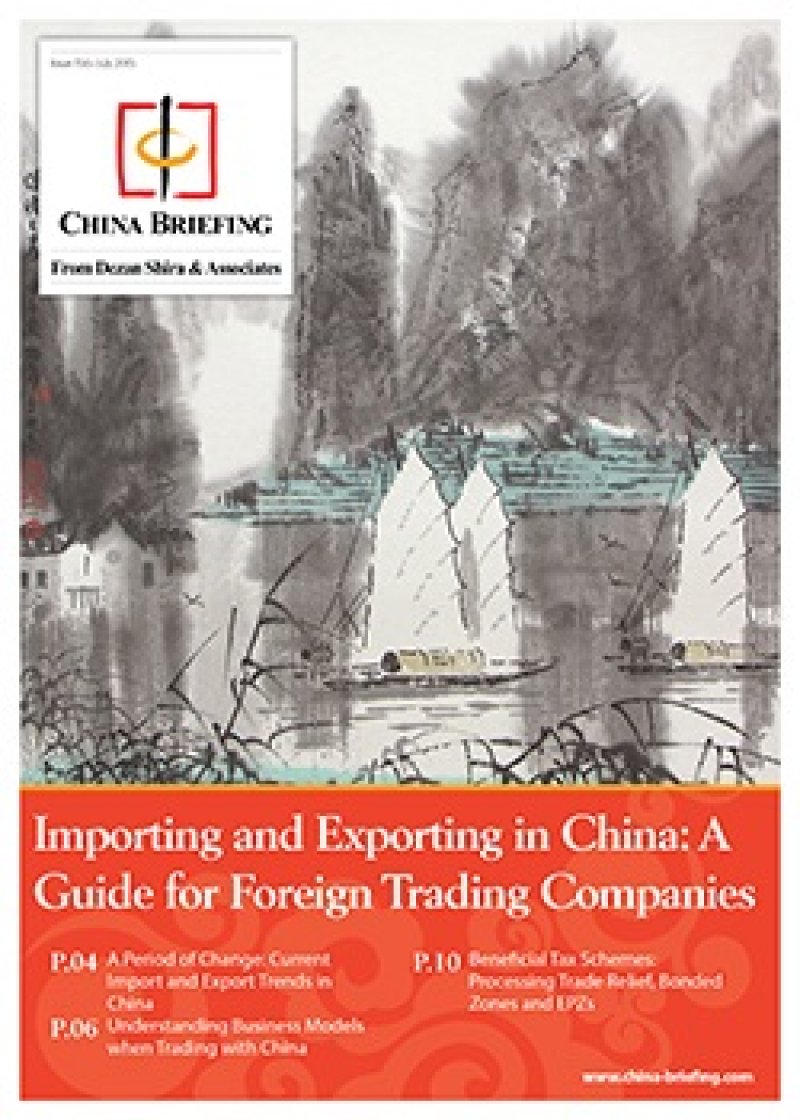Meat’s off the Menu: Exploring Opportunities for Meat Alternatives in China
The Chinese government has issued new dietary guidelines recommended by the country’s Health Ministry, which aim to reduce the country’s meat consumption in half by 2030. China consumes around 30 percent of the world’s meat, including half of its pork, even though average per capita meat consumption is half that of the average American or Australian. The guidelines recommend eating around 40-75 grams of meat per day, closer to recommendations made by the UK Department of Health.
Some commentators have pointed out that these guidelines have the potential to be instrumental in reducing the country’s greenhouse gas emissions. Globally, the livestock industry produces 14.5 percent of greenhouse gas emissions, totaling more than that of the global transport sector. If the guidelines are met and China’s meat consumption is reduced by 50 percent, one billion tons of carbon dioxide emissions could be cut. In addition, it would alleviate stress on land and water resources which would be significantly strained if meat consumption continues to increase at the current rate.
Thirty years ago, the average Chinese consumed 13kg of meat annually. This figure has increased to around 63kg a year because of increases in disposable income, and is expected to increase by a further 30kg by 2030.
While there may be positive effects on the environment, the main aim of the guidelines is to improve public health. Research has suggested that reducing the consumption of meat, in particular red meats such as beef, lamb, and pork, can reduce the risk of developing bowel cancer and heart diseases. Regardless of the motivations for cutting meat consumption, China represents a steadily growing market for meat alternatives. Without stronger regulatory efforts, however, the government is unlikely to meet its lofty targets as Chinese consumers have little incentive to drastically shift their eating habits in practice.
![]() RELATED: Business Advisory Services from Dezan Shira & Associates
RELATED: Business Advisory Services from Dezan Shira & Associates
Meat alternatives
In China, consumption of meat and meat alternatives is affected by cultural and religious factors. The ability to eat meat is associated with wealth and prosperity. Consequently, vegetarianism isn’t as popular in China as it is in the West. However, Buddhist monks, nuns, and strict followers are expected to abstain from eating meat, and certain Buddhist foods make extensive use of tofu and braised gluten to replicate the texture of meat. Tofu is popularly consumed in many forms across China, and not necessarily as a meat substitute, though it was in the past as a cheap alternative. Since there is a widespread custom of eating meat alternatives, if the guidelines have their intended effect, there will be a large gap in the market for cheap, healthier meat alternatives such as those popular in the west:
Mycoprotein based meat alternatives such as Quorn were developed in the 1960s in anticipation of future food shortages. Made up of fungus extracts, mycoprotein is versatile foodstuff able to be shaped into a variety of forms, and easily flavored.
Texturized vegetable protein (TVP) is made of dehydrated soy. Once rehydrated, it can be used in a variety of ways, and comes in granule or chunk form. Its versatility makes it easy to recreate a myriad of meat products and dishes.
Tempeh is made of whole fermented soybeans, and has a more grainy texture than tofu. It can be used to emulate fish or ground meats. It is packed with nutrients and easy to prepare.
Seitan is made of processed wheat gluten and can easily be flavored, making it a perfect alternative for a variety of meats. It is more dense and chewy, allowing it to be fried, grilled, or braised. It is a good source of protein.
Jackfruit is a surprising alternative to meat. In its raw form, it is a healthy and tasty tropical fruit, but after baking it becomes chewy and can be broken up to reveal a texture very similar to chicken or pulled pork. Besides a mildly sweet flavor, it can be easily flavored, making it a surprisingly useful alternative to meat.
Opportunities and gaps in the market
Vegetarianism is gaining popularity slowly in China, driven by health, environmental, and animal welfare concerns. Although the more conscious display a general willingness to reduce meat consumption, many consumers will find it hard to give up the taste and texture associated with meat. This provides opportunities to develop and expand meat alternative products, which can satisfy the craving for meat while providing the benefit of plant based foods to a growing consumer group.
Meat alternative products are still not largely developed globally, and less so in China. Some such products do exist in China, catering to both Buddhist and non-Buddhist customers, mimicking popular meat dishes such as vegetarian abalone made of starch and seaweed extracts, vegetarian lamb made of soy protein, and vegetarian roasted pork based on textured vegetable protein. Noticing the trend, companies such as Shanghai Godly and Shenzhen Whole Perfect Foods have become successful within the meat alternatives product segment.
The China market is still budding and relatively calm. Foreign suppliers will be able to introduce new lines of products where demand is set to increase in the coming years with relatively little competition. Brand recognition can be boosted by emphasizing healthy eating and taste, as consumers demonstrate a willingness to reduce meat consumption and eat vegetarian meals. With only non-enforceable government guidelines in place, however, it is unlikely the government will achieve its ambitious meat reduction goals, as many may find it hard to ease off their carnivore diets in the absence of stricter regulations.
|
Asia Briefing Ltd. is a subsidiary of Dezan Shira & Associates. Dezan Shira is a specialist foreign direct investment practice, providing corporate establishment, business advisory, tax advisory and compliance, accounting, payroll, due diligence and financial review services to multinationals investing in China, Hong Kong, India, Vietnam, Singapore and the rest of ASEAN. For further information, please email china@dezshira.com or visit www.dezshira.com. Stay up to date with the latest business and investment trends in Asia by subscribing to our complimentary update service featuring news, commentary and regulatory insight. |

 Establishing & Operating a Business in China 2016
Establishing & Operating a Business in China 2016
Establishing & Operating a Business in China 2016, produced in collaboration with the experts at Dezan Shira & Associates, explores the establishment procedures and related considerations of the Representative Office (RO), and two types of Limited Liability Companies: the Wholly Foreign-owned Enterprise (WFOE) and the Sino-foreign Joint Venture (JV). The guide also includes issues specific to Hong Kong and Singapore holding companies, and details how foreign investors can close a foreign-invested enterprise smoothly in China.
 Selling, Sourcing and E-Commerce in China 2016 (First Edition)
Selling, Sourcing and E-Commerce in China 2016 (First Edition)
This guide, produced in collaboration with the experts at Dezan Shira & Associates, provides a comprehensive analysis of all these aspects of commerce in China. It discusses how foreign companies can best go about sourcing products from China; how foreign retailers can set up operations on the ground to sell directly to the country’s massive consumer class; and finally details how foreign enterprises can access China’s lucrative yet ostensibly complex e-commerce market.
Importing and Exporting in China: a Guide for Trading Companies
In this issue of China Briefing, we discuss the latest import and export trends in China, and analyze the ways in which a foreign company in China can properly prepare for the import/export process. With import taxes and duties adding a significant cost burden, we explain how this system works in China, and highlight some of the tax incentives that the Chinese government has put in place to help stimulate trade.
- Previous Article Inflicting Loss on Investors through Cooked Books: Assessing Accounting Fraud in China
- Next Article Avoiding Labor Disputes in China: The Importance of the Staff Handbook





























